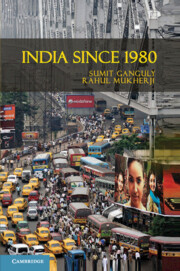2 - The Transformation of India's Foreign Policy
Published online by Cambridge University Press: 05 June 2012
Summary
The Past as Prologue
From the vantage point of the Cold War's end, India's pursuit of a foreign policy based upon nonalignment now appears quaint at best and hypocritical at worst. It appears quaint because after its initial phase the policy ill-served India's interest and appears hypocritical because the country often failed to live up to its cherished principles. This was especially true after it signed a treaty of “peace, friendship and cooperation” with the Soviet Union effectively aligning India with the Soviet Union. Yet some understanding of the historical context that spawned the doctrine reveals that it was not bereft of utility to India's national interests.
Prime Minister Nehru, who was the principal architect of independent India's foreign policy, had fashioned this doctrine for a number of compelling reasons. Perhaps the most compelling were the memories of British colonial domination. Consequently, the notion of subordinating the nascent country's foreign policy to the interests and proclivities of either emergent superpower bloc was repugnant. Nehru was also acutely concerned about the possibilities of Bonapartism and the militarization of Indian society. Associating India with one of the two power blocs could, in his view, lead India to divert its scarce resources toward unwanted military spending. Finally, nonalignment was also part of a larger strategy to transform the global order. Nehru and others had hoped that it would contribute to the strength of multilateral fora, hobble the use of force in international politics, reduce global inequalities, and bring an end to the last remnants of colonialism.
- Type
- Chapter
- Information
- India Since 1980 , pp. 18 - 59Publisher: Cambridge University PressPrint publication year: 2011



